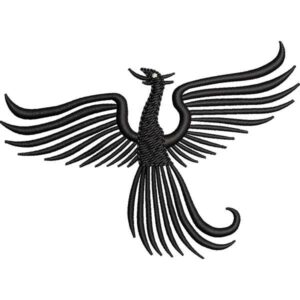


Learn how embroidery digitizers transform designs for perfection in 2025 with expert techniques for stunning, precise embroidery results.
Embroidery digitizers are skilled artisans who transform artwork into digital stitch files, enabling embroidery machines to produce vibrant, precise designs on fabrics like cotton, silk, or denim. In 2025, the demand for expert digitizing is surging due to its critical role in fashion, branding, and personalized goods. embroidery digitizers These professionals ensure every stitch aligns with client visions, delivering durable
Expert digitizers create designs that are visually appealing, durable, and fabric-compatible, preventing issues like stitch distortion, thread breaks, or puckering. Their precision is vital for applications ranging from corporate uniforms to high-end fashion, ensuring logos, monograms, and patterns meet modern industry standards.
To achieve perfection, digitizers employ:
Choosing the right stitches is key to design perfection. Running stitches (1-3mm) create clean outlines for minimalist designs, while satin stitches (3-6mm, 0.4-0.5mm spacing) provide smooth fills for logos or text. Tatami fill stitches add texture to larger areas, ensuring durability and clarity. Experts adjust stitch angles for visual flow and test on sample fabrics to confirm suitability, ensuring vibrant, precise designs in 2025.
Use running stitches (1-3mm) for fine outlines.
Apply satin stitches (3-6mm) for smooth fills.
Use tatami fills for textured, large areas.
Test stitches on samples for clarity and durability.
Digitizers tailor settings to suit fabrics like silk, denim, or knits. They adjust stitch density (0.4-0.6mm spacing) to prevent puckering on delicate materials or distortion on textured ones. Minimal underlay, like edge-run or light zigzag, supports stitches without bulk. Machine tension is fine-tuned (lowered by 5-10%) for smooth results. Testing on target fabrics ensures compatibility, delivering flawless embroidery in 2025.
Study fabric properties to understand behavior.
Set low density (0.4-0.6mm) for delicate fabrics.
Use minimal underlay for stability.
Test on fabrics to verify no puckering or distortion.
Efficient stitch paths minimize thread trims and tension for seamless designs. Experts start from the design’s center, moving outward to distribute tension evenly. Stitches follow shapes to reduce jumps and misalignment, aligning with fabric grain to prevent distortion. Digital previews confirm path accuracy, ensuring clean, durable designs in 2025.
Start stitching from the center for stability.
Sequence stitches to minimize thread trims.
Align paths with fabric grain for consistency.
Preview paths digitally for accuracy.
Modern tools enhance digitizing precision:
3D Previews: Visualize designs for accuracy.
Auto-Stitch Tools: Suggest optimal stitches.
Vector Editing Tools: Refine artwork for scaling.
Cloud Collaboration: Enable real-time feedback.
These tools streamline the process, ensuring vibrant, precise designs in 2025.
Use 3D previews to verify design clarity.
Apply auto-stitch tools for efficiency.
Edit vectors for precise scaling.
Share files via cloud for collaboration.
Expert digitizing enhances:
Corporate Branding: Precise logos on uniforms.
Fashion Apparel: Stunning patterns on dresses.
Personalized Gifts: Flawless monograms on towels.
Home Décor: Elegant designs on cushions.
Challenges and Solutions
Common challenges include:
Stitch Distortion: Use vector artwork and precise paths.
Fabric Puckering: Adjust density and underlay.
Thread Breaks: Optimize tension and paths.
Complex Designs: Simplify artwork and test samples.
These solutions ensure flawless results.
Sustainability in Digitizing
Digitizers support sustainability by:
Using digital previews to reduce waste.
Optimizing stitches to lower thread use.
Selecting eco-friendly threads.
Storing designs in the cloud for reuse.
In 2025, expert embroidery digitizers achieve perfection through precise artwork conversion, optimal stitch selection, fabric adjustments, efficient paths, advanced technology, and thorough testing. These steps create stunning, durable designs for branding, fashion, and custom projects. By mastering these techniques or partnering with skilled professionals, you can ensure flawless embroidery that meets the highest standards.
A: They use vector artwork and digital previews for accurate stitch files.
A: Running (1-3mm) and satin stitches (3-6mm) ensure clarity and durability.
A: Tailored settings prevent puckering and ensure quality on diverse fabrics.
A: 3D previews, auto-stitch tools, and vector editing ensure precision.
A: It identifies issues like distortion, ensuring perfect embroidery outcomes.
